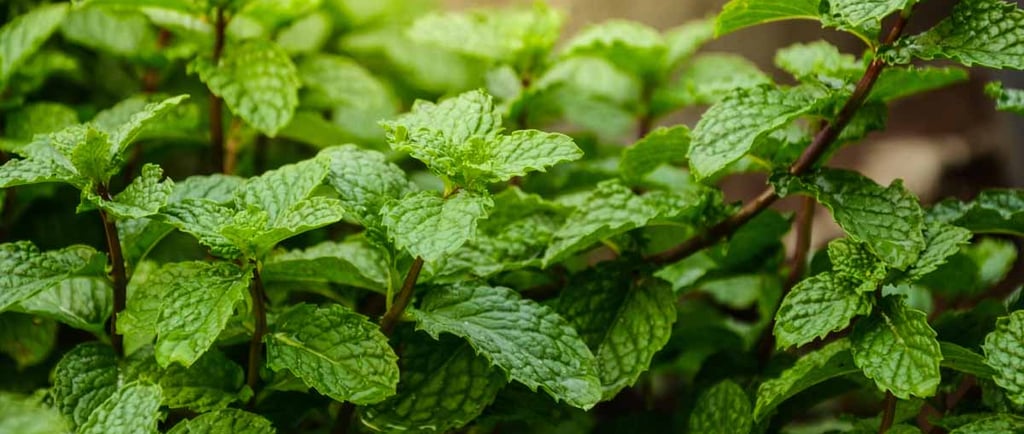An Exploration of Rat Deterrents


In the arid expanse of Central Queensland, where the sun beats down relentlessly and the soil challenges even the hardiest of plants, a curious story unfolds amidst the chaos of a rat plague. Our humble nursery has managed to weather the storm relatively unscathed, thanks to some insights we've gleaned along the way. This scientific exploration delves into the intricate defence mechanisms of plants against rats, shedding light on why our nursery remains untouched by the furry invaders.
The Rat Plague's Test:
The rat plague that swept through our region posed a significant challenge to gardens and nurseries alike. However, our nursery stood resilient, largely unaffected by the rat infestation. This anomaly prompted us to delve deeper into the scientific underpinnings of rat deterrents in plants.
While neighbouring gardens suffered from rat-induced damage, our nursery's defences remained effective, demonstrating the power of plant-based protection.
Our Experience with the Rat Plague:
The onset of the rat plague was a daunting experience for our nursery. We heard tales of neighbouring gardens and green spaces succumbing to the relentless nibbling of rats, leaving behind a trail of destruction. As the furry invaders proliferated, gardeners scrambled to find solutions to protect their precious plants from becoming rat feasts.
In our nursery, we had a stroke of luck with sacrificial rosella plants and a juicy watermelon that seemed to divert the rats' attention away from our nursery plants. However, their persistence was evident when they attempted to gnaw their way into the house, perhaps lured by the scent of food tossed around by an adventurous infant during meal times.
Through careful observation and adaptation, we honed our defences, learning valuable lessons from the challenges posed by the rat plague.
Olfactory System of Rats:
Rats, like many rodents, heavily rely on their olfactory system to navigate their environment and locate food sources. They are particularly sensitive to certain volatile compounds emitted by plants, which can either attract or repel them. Understanding the intricacies of rat olfaction is crucial in devising effective strategies to deter them from gardens and nurseries.
Scientific studies have indicated that rats possess a highly developed sense of smell, making them susceptible to the deterrent effects of certain plant volatiles.
Plant Volatiles and Deterrents:
Plants have evolved a myriad of defence mechanisms, including the release of volatile organic compounds (VOCs), to protect themselves from herbivores like rats. These VOCs can act as deterrents by triggering aversive responses in rodents. Aromatic herbs such as basil and mint, which we luckily have in our nursery, emit volatile oils that rats find unpleasant, disrupting their olfactory receptors and deterring them from exploring further.
Laboratory experiments have demonstrated that rats avoid areas infused with the volatile compounds emitted by rat-repellent plants, supporting their efficacy in deterring rodent pests.
Communication Among Plants:
Plants possess a fascinating ability to communicate with each other, especially in response to threats like herbivores. Through chemical signalling, plants can warn neighbouring plants of impending danger, triggering them to activate defence mechanisms. This communication occurs both above and below ground, with roots releasing chemical signals into the soil that can be detected by nearby plants. Even potted plants can participate in this communication network, albeit to a lesser extent compared to plants in the ground.
Studies on plant communication have revealed intricate networks of signalling molecules that help plants coordinate their defence responses, contributing to overall pest resistance.
Scientific Strategies for Rat-Resilient Gardens:
Based on our scientific understanding of rat deterrence in plants, here are some detailed strategies for creating rat-resilient gardens:
Choose Rat-Repellent Plants: Select plants known for emitting volatile compounds that deter rats, such as aromatic herbs and native species with natural repellent properties.
Scientific literature confirms the efficacy of certain plant compounds in repelling rats, providing a basis for plant selection in pest-resistant gardens.
Utilise Companion Planting: Employ companion planting techniques to enhance the protective effects of certain plants. For example, planting marigolds alongside vegetables can deter rats due to their strong scent.
Field trials have demonstrated the synergistic benefits of companion planting in reducing pest damage, with marigolds serving as effective deterrents against rats.
Understand Plant Communication: Be aware of plants' ability to communicate with each other and create a harmonious garden ecosystem that fosters natural defences.
Research on plant communication pathways underscores the importance of biodiversity and interplant interactions in bolstering plant resilience to pests.
Regular Monitoring: Continuously monitor your garden for signs of rat activity and adjust planting and deterrent strategies accordingly.
Active monitoring and adaptive management are key to maintaining a rat-resilient garden, allowing for timely interventions and optimisation of pest control measures.
As gardeners ourselves, we empathise with those affected by the challenges of rat infestations. It can be disheartening to see your hard work devoured by hungry pests. However, with knowledge, perseverance, and a touch of scientific ingenuity, we can overcome these obstacles and create thriving, rat-resilient gardens that bring joy and beauty to our lives
